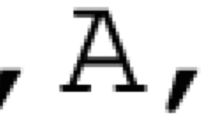Abstract
Maximizing the sum of two generalized Rayleigh quotients (SRQ) can be reformulated as a one-dimensional optimization problem, where the function value evaluations are reduced to solving semi-definite programming (SDP) subproblems. In this paper, we first use the dual SDP subproblem to construct an explicit overestimation and then propose a branch-and-bound algorithm to globally solve (SRQ). Numerical results demonstrate that it is even more efficient than the recent SDP-based heuristic algorithm.
Similar content being viewed by others
References
Antoniou A, Lu W-S (2007) Practical optimization: algorithms and engineering applications. Springer Science + Business Media, LLC, New York
Bazaraa M-S, Sherali H-D, Shetty C-M (2006) Nonlinear programming: theory and algorithms, 3rd edn. John Wiley and Sons Inc., Hoboken
Dundar M-M, Fung G, Bi J, Sandilya S, Rao B (2005) Sparse Fisher discriminant analysis for computer aided detection. In: Proceedings of SIAM international conference on data mining
Freund R-W, Jarre F (2001) Solving the sum-of-ratios problem by an interior-point method. J Glob Optim 19:83–102
Fung E, Michael K-Ng (2007) On sparse Fisher discriminant method for microarray data analysis. Bioinformation 2:230–234
Grant M, Boyd S (2017) CVX: MATLAB software for disciplined convex programming. Version 2.1. http://cvxr.com/cvx
Jiao H-W, Liu S-Y (2015) A practicable branch and bound algorithm for sum of linear ratios problem. Eur J Oper Res 243(3):723–730
Jiao H-W, Liu S-Y (2017) Range division and compression algorithm for quadratically constrained sum of quadratic ratios. Comput Appl Math 36(1):225–247
Luenberger D-G, Ye Y (2008) Linear and nonlinear programming, 3rd edn. Springer Science + Business Media, LLC, New York
Matsui T (1996) NP-hardness of linear multiplicative programming and related problems. J Glob Optim 9:113–119
Nguyen V-B, Sheu R-L, Xia Y (2016) Maximizing the sum of a generalized Rayleigh quotient and another Rayleigh quotient on the unit sphere via semidefinite programming. J Glob Optim 64(2):399–416
Parlet B-N (1998) The symmetric eigenvalue problem. In: Classics in applied mathematics, vol 20. SIAM, Philadelphia, PA
Pólik I, Terlaky T (2007) A survey of the S-lemma. SIAM Rev 49(3):371–418
Polyak B-T (1998) Convexity of quadratic transformations and its use in control and optimization. J Optim Theory App 99(3):553–583
Primolevo G, Simeone O, Spagnolini U (2006) Towards a joint optimization of scheduling and beamforming for MIMO downlink. In: IEEE ninth international symposium on spread spectrum techniques and applications. pp 493–497
Schaible S, Shi J-M (2003) Fractional programming: the sum-of-ratios case. Optim Methods Softw 18(2):219–229
Sturm J-F, Zhang S (2003) On cones of nonnegative quadratic functions. Math Oper Res 28:246–267
Wu M-C, Zhang L-S, Wang Z-X, Christiani D-C, Lin X-H (2009) Sparse linear discriminant analysis for simultaneous testing for the significance of a gene set/pathway and gene selection. Bioinformatics 25:1145–1151
Ye Y, Zhang S-Z (2003) New results on quadratic minimization. SIAM J Optim 14(1):245–267
Zhang L-H (2013) On optimizing the sum of the Rayleigh quotient and the generalized Rayleigh quotient on the unit sphere. Comput Optim Appl 54:111–139
Zhang L-H (2014) On a self-consistent-field-like iteration for maximizing the sum of the Rayleigh quotients. J Comput Appl Math 257:14–28
Acknowledgements
The authors are grateful to the two anonymous referees for their valuable comments and suggestions.
Author information
Authors and Affiliations
Corresponding author
Additional information
Communicated by Ernesto G. Birgin.
This research was supported by NSFC under Grants 11571029, 11471325 and 11771056, and by fundamental research funds for the Central Universities under Grant YWF-17-BJ-Y-52.
Rights and permissions
About this article
Cite this article
Wang, X., Wang, L. & Xia, Y. An efficient global optimization algorithm for maximizing the sum of two generalized Rayleigh quotients. Comp. Appl. Math. 37, 4412–4422 (2018). https://doi.org/10.1007/s40314-018-0575-9
Received:
Revised:
Accepted:
Published:
Issue Date:
DOI: https://doi.org/10.1007/s40314-018-0575-9




